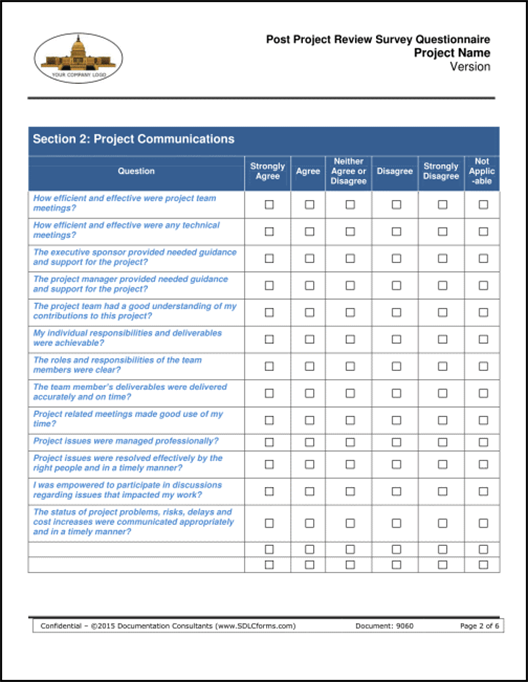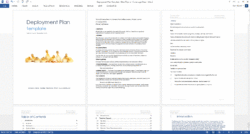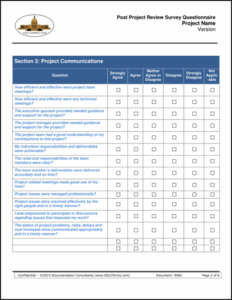You’ve put in the hard work, the project is launched, and the new system, process, or product is finally live. Congratulations! But the journey doesn’t end at deployment. In fact, one of the most crucial phases often begins right after go-live: the post implementation review. This isn’t just a formality; it’s a golden opportunity to learn, improve, and ensure future successes. It’s about understanding what went well, what could have gone better, and how the actual outcome stacks up against the initial objectives.

To truly glean valuable insights from this review, a structured approach is essential. That’s where a well-designed survey comes into play. It provides a consistent, anonymous, and comprehensive way to gather feedback from all stakeholders, ensuring no critical perspective is overlooked. Think of it as your team’s collective wisdom being harnessed to refine your project management playbook.
Crafting Your Comprehensive Post Implementation Review Survey
Designing an effective post implementation review survey is about more than just asking a few questions; it’s about strategically eliciting actionable feedback that can genuinely inform future projects. The goal is to cover all facets of the project lifecycle, from planning and execution to the final outcomes and team dynamics. A good survey helps you pinpoint bottlenecks, celebrate successes, and most importantly, document lessons learned for continuous improvement. It should encourage honest reflection without being overly burdensome for the respondents.
Start by defining the core objectives of your review. Are you focused on process efficiency, stakeholder satisfaction, adherence to budget and timeline, or the quality of the final deliverable? Often, it’s a combination of these. Your survey questions should directly support these objectives. For instance, if stakeholder satisfaction is key, include questions that gauge how well their expectations were met. If process efficiency is a concern, ask about communication channels or decision-making processes.
Remember to balance quantitative (rating scales, multiple choice) and qualitative (open-ended) questions. While ratings provide quick data for trends and comparisons, the open-ended questions are where the true gold often lies – the nuanced explanations, suggestions, and insights that illuminate the ‘why’ behind the ‘what’. People appreciate the opportunity to elaborate and feel their voice is truly heard.
Consider who will be taking the survey and tailor the language accordingly. Project managers, team members, end-users, and even external stakeholders might have different perspectives and areas of expertise. Ensuring anonymity is also paramount to encourage candid responses, especially when addressing challenges or criticisms. A well-constructed post implementation review survey template can make this process far more streamlined and effective.
Key Sections to Include
When structuring your survey, consider breaking it down into logical sections to guide respondents through the project journey:
- Project Overview and Goals: Did everyone understand the project’s purpose and objectives? Were the goals clear and realistic?
- Planning and Preparation: How effective was the initial planning phase? Was resource allocation appropriate?
- Execution and Management: How well was the project executed? Were communication channels effective? How were risks managed?
- Outcome and Impact: Did the project deliver the intended results? What was its impact on the organization or users?
- Team Dynamics and Collaboration: How well did the team work together? Were roles and responsibilities clear?
- Lessons Learned and Future Improvements: What went well that should be replicated? What challenges arose, and how can they be avoided next time? What specific recommendations do you have for future projects?
- Overall Satisfaction: A general question or rating on satisfaction with the project and its outcome.
Maximizing Engagement and Action from Your Survey
Once your meticulously crafted survey is ready, the next challenge is getting people to complete it and, more importantly, turning the collected data into meaningful action. A beautifully designed survey is only as good as the insights it generates and the changes it inspires. Promoting the survey effectively and then conducting a thorough analysis are crucial steps to ensure your post implementation review efforts truly pay off.
Start by clearly communicating the purpose and importance of the survey to all potential respondents. Explain that their feedback is invaluable, directly contributing to improving future projects and processes within the organization. Emphasize the anonymity aspect to foster trust. Send out reminders, but avoid overwhelming people. Timing is also key; send the survey out relatively soon after the implementation, while details are still fresh in everyone’s minds, but allow enough time for the new system or process to settle in.
Once the responses are in, dedicate ample time to analyze the data. Look for trends in the quantitative data – what areas consistently received high or low scores? Then, dive into the qualitative comments to understand the ‘why’ behind these trends. Categorize recurring themes from open-ended questions. This often involves a bit of qualitative coding, where you group similar comments together. Don’t shy away from negative feedback; these insights are often the most valuable for improvement.
The final, and arguably most important, step is to translate your findings into actionable recommendations. A review isn’t complete until lessons are learned and incorporated into future practices. Share a summary of the findings with relevant stakeholders, focusing on key takeaways and proposed next steps. This might involve updating project methodologies, refining communication protocols, or developing new training programs.
- Communicate Clearly: Explain the "why" behind the survey and its importance to future success.
- Ensure Accessibility: Make the survey easy to access and complete on various devices.
- Timely Follow-Up: Send a thank you to respondents and share a summary of findings and actions taken.
- Focus on Actionable Insights: Don’t just report data; identify specific areas for improvement and propose concrete solutions.
- Integrate Lessons Learned: Embed the improvements into your organizational processes, training, or project templates.
A thoughtful review process reinforces a culture of continuous learning and improvement within any organization. By consistently gathering and acting upon feedback after projects conclude, teams can refine their approaches, avoid repeating past mistakes, and build upon successes. It’s about taking the pulse of your efforts and ensuring every future endeavor starts on an even stronger footing. The insights gained from such reviews become invaluable assets, contributing directly to enhanced efficiency, happier teams, and more successful project outcomes down the line.



